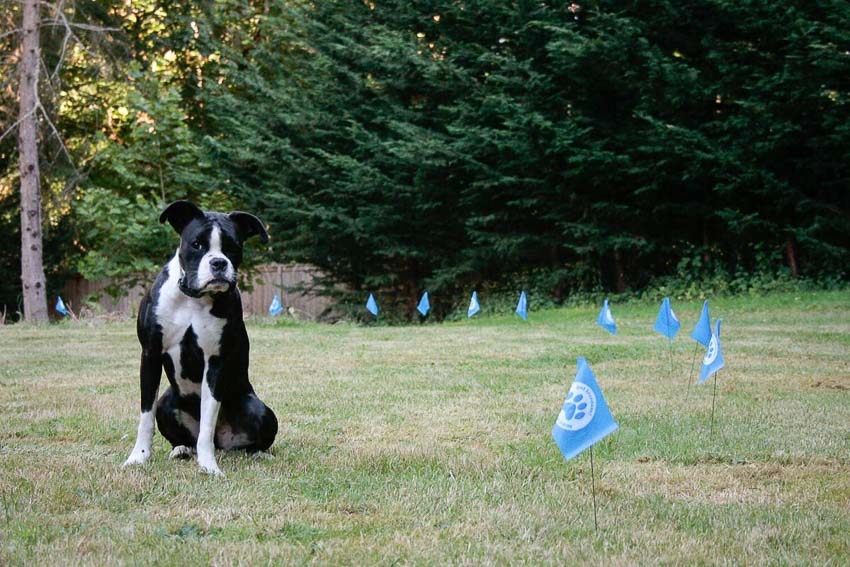A fence around your yard will keep your dog safe, but it’s not always practical or affordable. One of the quickest types of fences to install is also one of the least expensive. Let OPE help you learn about the costs of in-ground dog fencing and how to install the right one for your yard with our Comprehensive Guide to In-Ground Dog Fencing.
What is an in-ground dog fence?
In-ground dog fences are electronic containment systems with three components: a collar, transmitter, and underground boundary wire. They are an excellent choice for keeping pets contained when fencing isn’t possible or affordable, and they are available for all yard sizes, from ¼ acre to 100 acres.
Why in-ground dog fences are popular
Electric fences for dogs have become more popular because they are affordable and effective. However, other affordable types of fences used to contain dogs, such as chainlink fences, are unattractive and contribute to the visual clutter of a neighborhood.
Consequently, some homeowners’ associations restrict the types of fences homeowners can have in their yards.
In-ground electric dog fences are called e-fences, buried wire fences, underground fences, and invisible fences. Although different brands have slightly different features, they all work on the same basic principles.
How an in-ground dog fence works
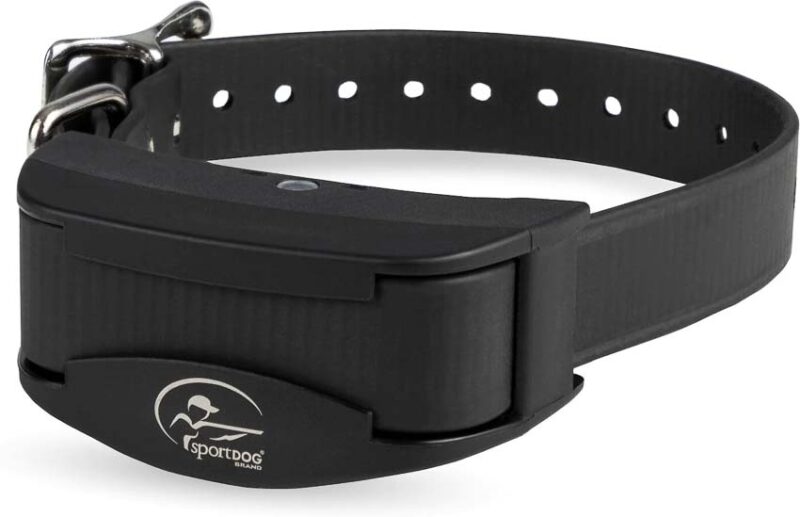
Electric dog fences go around the perimeter of your property, and when your dog is wearing the collar, it is given a warning beep and vibration when it approaches the boundary. Once it crosses the boundary or stimulation zone, a safe static stimulation is delivered until the dog returns to the boundary zone.
Training a dog to use an invisible fence safely takes about two to three weeks.
You should conduct training in short sessions until your dog is completely aware of the boundaries. And once you’ve done so, it can enjoy the freedom to roam in your yard, and you can enjoy peace of mind knowing it won’t run off.
Electric dog fence installation
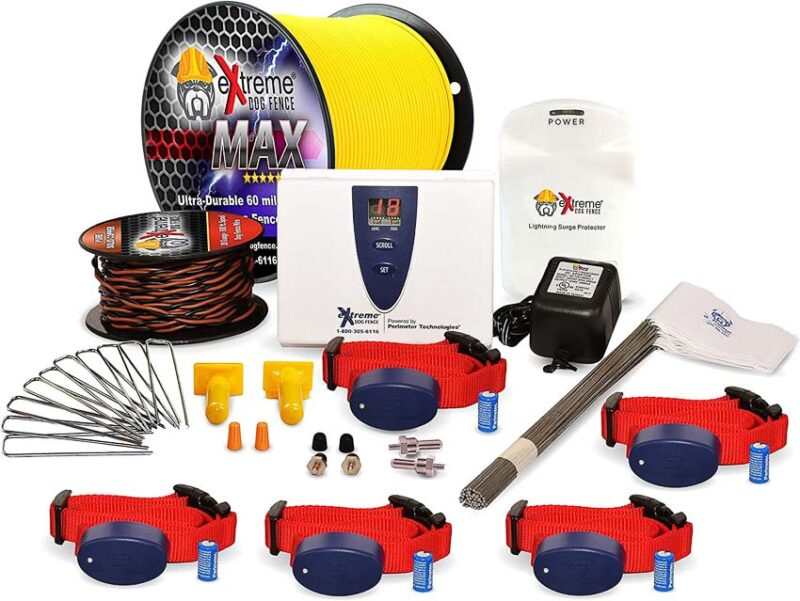
Electronic dog fence installation is an easy project anyone can do. On small properties, it will usually take less than a day.
Choosing the right wire for your fence
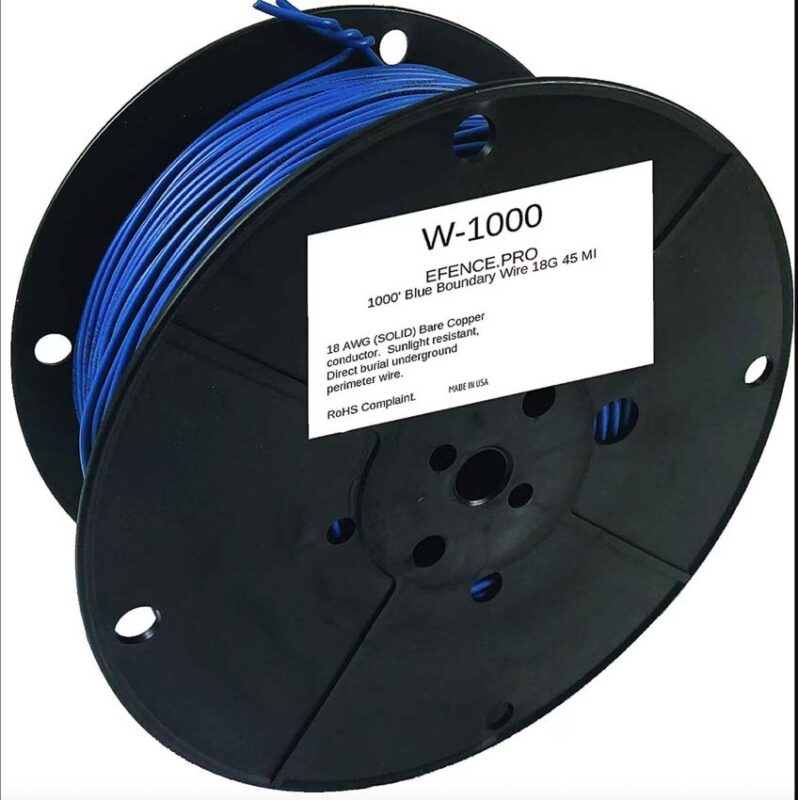
Most invisible dog fence kits have enough wire to fence in about one-third to one-half an acre. You will need to purchase additional wire if you have a larger area.
Professionally installed e-fences often use a 14-gauge wire, which is thicker. Thicker wires can transmit more electricity without resistance, making them more effective for long runs.
Determine your fencing area
The most important thing to remember when determining your fencing area is that your boundary wire needs to make a complete loop. Then, depending on where you want your dog free to roam, you can lay out your perimeter in various shapes.
Here are some popular fencing areas:
- Simple perimeter layout with a single loop
- Separate the front and back yards by running the line along the sides of the house
- A double loop that starts at one side of your house and goes to the other and back again to create a complete loop, thereby excluding the front of your house
- Exclusionary zones made by running a line to the perimeter and going around gardens or flower beds
It helps to draw a map of your e-fence boundary lines.
Keep your lines away from other wires and fences that can interrupt the signal from your transmitter to your boundary wire. Once you’ve designed your perimeter, use the small flags with your kit to mark the boundary line.
To determine how much wire you need, use this handy online acreage calculator for reference.
Setting up the transmitter
You should install the transmitter where you can plug it and, at the same time, keep it dry. If it’s mounted in an area where it can get wet, you risk electric shocks or fires.
A garage or shed is usually the best choice, but don’t mount it next to an electric panel or a large appliance, which can interrupt the signal.
Moreover, you should use a surge protector to protect the transmitter from lightning strikes and power surges. Also, follow the instructions for grounding your system.
Laying out the wires
Lay out the wires to test the system before you bury them. Then, use the following tips for the best results:
- Use gradual turns instead of sharp angles, which can confuse the transmitter.
- If your perimeter crosses over a doorway or other area where your dog needs to cross, twist a wire around that section to cancel out the signal.
- Give the wire a little slack every 15 feet or so, especially at the corners of your perimeter.
- Don’t forget to create a complete loop.
Testing the fence and collar
Once you’re satisfied with the layout of your wires, connect them to the transmitter and test your system. With the collar turned on, approach the boundary wire, and if it beeps and vibrates, your system is connected properly.
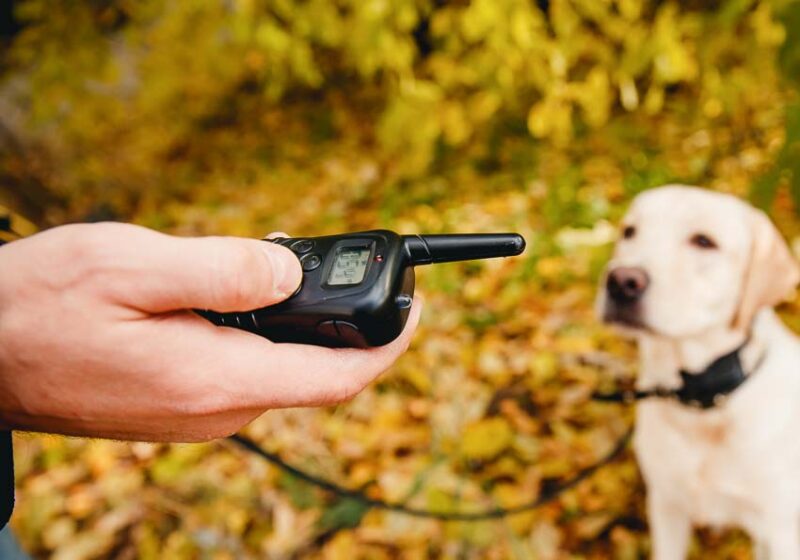
How to bury the wire
Before digging, always call 811. Safety first!
Now that your system is properly laid out, you can bury the wire. Disconnect the wire from the transmitter, and dig a trench about 3 inches deep. If you lay the wire too deep, the signal won’t transmit.
Burying the wire is important to prevent damage and keep people from tripping over it. Once you’re finished burying the wire, leave the flags in place until you’ve fully trained your dog to know where the boundary is.
Benefits of an in-ground dog fence

For a pet owner, an electric fence for dogs provides you with valuable peace of mind knowing that your dog will stay safely in your yard. However, if you’re not convinced that this is the right fencing solution for you and your dog, learn more about the advantages of in-ground dog fences and how they will help keep your pet safe and secure.
Provides a safe and contained area
Dogs need safe and contained areas to stay out of trouble and avoid dangers presented to free-roaming dogs. When confined to your yard, they are safer from vehicles, getting infectious diseases, fighting with other dogs, or attacking people or other animals.
Dog thievery is also a problem; your dog is less likely to get taken when it’s not wandering around the neighborhood.
Allows freedom without confinement

Underground dog fences still allow your pet plenty of freedom without being confined. However, some dogs are escape artists who can get past traditional fences by climbing over, chewing, or digging their way out.
Aesthetically pleasing
Invisible fences are aesthetically pleasing because they don’t add visual clutter to your yard. A related benefit is that they don’t obstruct your view.
Cost-effective
The average cost of an in-ground dog fence, including labor, is between $1,000 and $2,500, but since this type of fence is DIY friendly, you can do it for much less. The cheapest in-ground dog fence kits start at under $100, but the size of your yard and the number of dogs you have will determine the ultimate cost.
Low maintenance
Traditional fences require maintenance, but with an electronic dog collar fence, the only maintenance required is changing the batteries on the collar every few months, which costs less than $50 per year.
Can be combined with traditional fencing

Keeping your dog contained is not the only reason to have a fence.
Privacy and security are other common reasons to fence your yard. The good thing about in-ground dog fencing is that you can pair it with other types of fences, and even if you leave your gate open, you don’t have to worry about your dog leaving your yard.
The cost of in-ground dog fencing and factors that change that
Electric dog fencing is the least expensive type of fencing you can use to contain your dog.
The cost of in-ground dog fencing varies depending on several factors. You can purchase kits for less than $100 all the way up to $1,000 or more for maximum protection of multiple dogs.
Take a look at the factors that affect the cost of in-ground dog fences.
Cost of installation breakdown
The total installation cost for an in-ground containment system averages about $2.25 per linear foot, including labor and materials. Therefore, you can save a lot of money by DIYing the installation of an in-ground dog fence.
Many online retailers sell components and kits for in-ground dog fencing, but it’s important to remember that cheaper isn’t always better, and you get what you pay for. You can build a system to fit your needs, add collars or extend the amount of wire to accommodate your yard size, or purchase a kit with everything you need.
The following components and kits are available from Chewy.com .
| Components | Cost |
| SportDOG In-Ground Dog Fence Transmitter | $129.95 |
| SportDOG Rechargeable In-Ground Fence & Add-A-Dog Collar | $139.95 |
| SportDOG Replacement Strap Dog Collar, 3/4-in | $14.95 |
| Boundary Wire Spool, 1,000 feet, 18 gauge | $149.95 |
If you want to purchase an entire system, here are a few options:
- The Dogtra E-FENCE 3500 Containment System In-Ground Wired Fence w/Rechargeable Wireless Collar costs $269.99 and covers up to 40 acres.
- The SportDOG Rechargeable In-Ground Dog Fence System costs $319.99 and contains enough wire to cover 1.34 acres. Simply purchase additional collars if you have more than one dog.
- The Extreme Dog Fence Max is available from Amazon. It contains five dog collars, covers 4 acres, and costs $1,078.87.
Factors that affect installation cost
There is a large price range of in-ground dog fences. Here are some other factors that can affect the in-ground dog fence installation cost.
- Additional installation equipment
- Amount of wire needed
- Type of wire
- Terrain and soil conditions
- Cost of labor unless you DIY
- Additional features and accessories
FAQs about In-Ground Dog Fencing
How does an in-ground dog fence work?
An in-ground dog fence uses a radio signal from a transmitter, wire lines, and a receiver on a dog’s collar to provide warning beeps and safe static stimulations that keep your dog in a contained area.
Will an in-ground dog fence hurt my dog?
In-ground fences are safe for dogs. When properly trained, your dog will quickly learn the boundary areas of the in-ground fence and stay within the containment area to avoid static stimulation.
However, these systems aren’t suited to all dogs, especially those with aggression problems or high prey drives.
Can you install an in-ground dog fence on any type of terrain?
It can be more challenging to install the boundary wire on rocky terrain or steep hillsides, but in-ground fences work on any terrain.
How do I train my dog to use an in-ground dog fence?
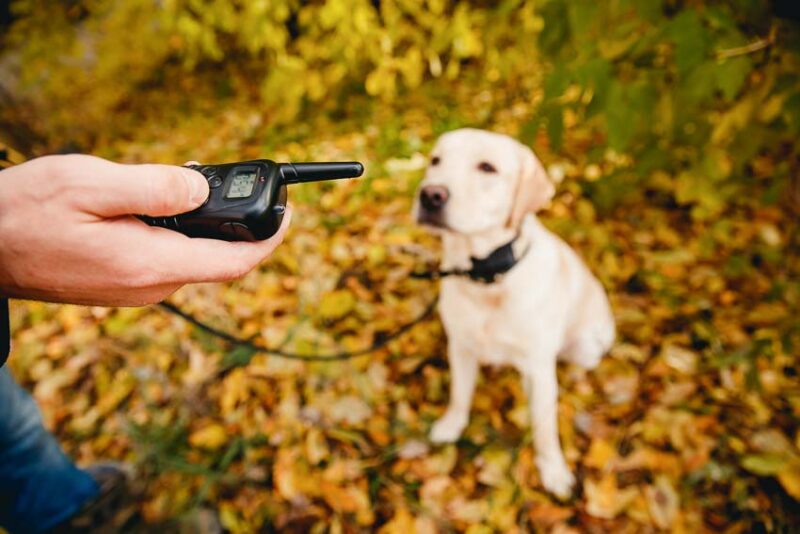
Training a dog to use an in-ground fence usually takes two to three weeks.
Train your dog in multiple 10- to 15-minute sessions each day using a leash and food treats. Start with the lowest static setting, and as you approach the fence boundary flag and it starts to beep, pull the dog back and give him treats.
Gradually increase the static setting and continue introducing your dog to the boundary, and it will soon learn to stay inside the flagged zone.
What happens if the power goes out?
Unless you have equipped your system with a battery backup, an in-ground dog fence won’t work if the power goes out. However, it’s unlikely that your dog will be aware that the power is out, and it isn’t likely to test the system.
Are there any other things to consider before installing an in-ground dog fence?
If you plan on training your dog with an e-collar, you should complete their training before installing an in-ground fence. Dogs trained to in-ground fences naturally pull back when the static charge is applied during training, which can be problematic for training certain commands.
Now that you’re up to speed on how to keep your dog in the yard, read up on how to get fleas out of your yard! And we can’t forget about eliminating ticks, either!

